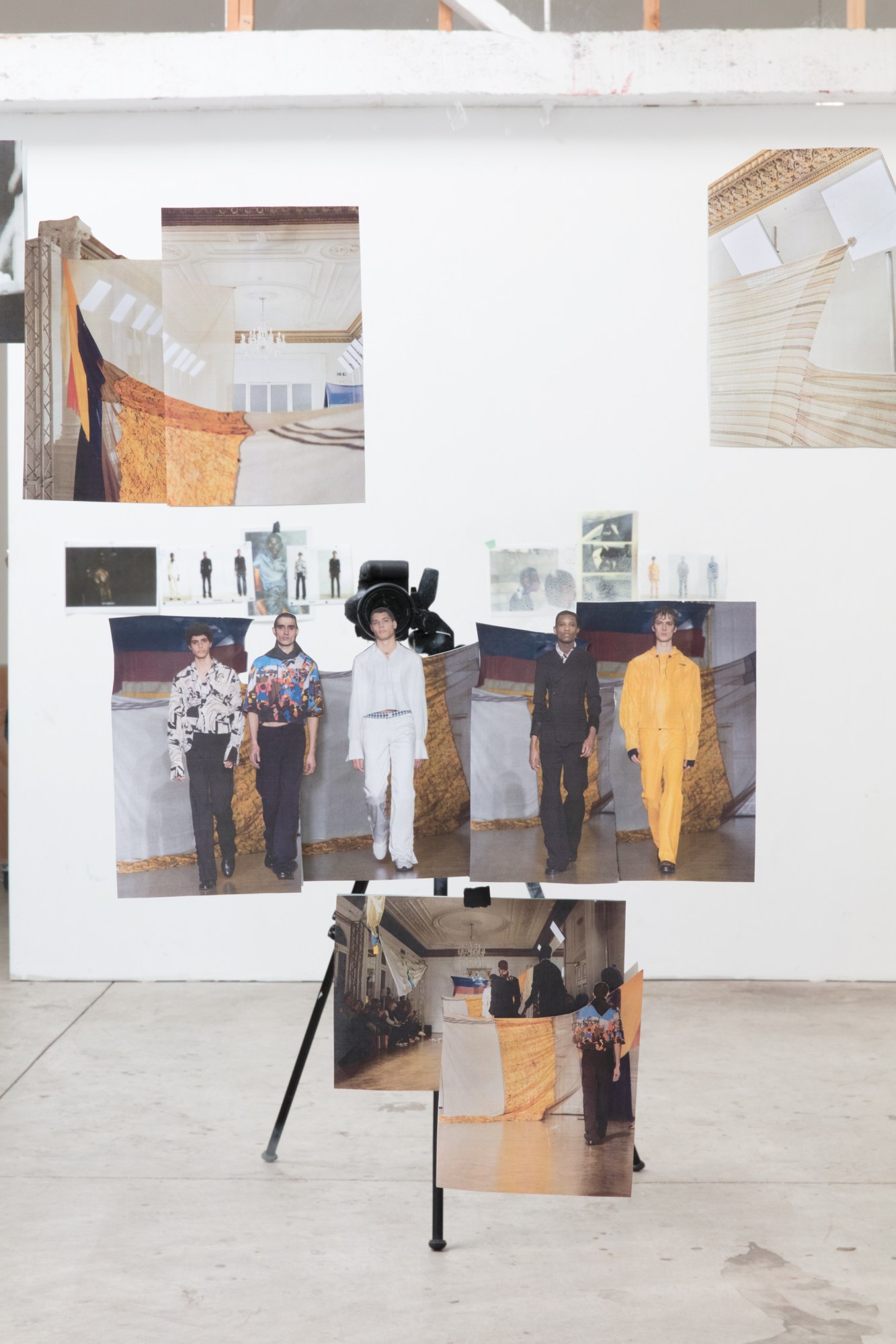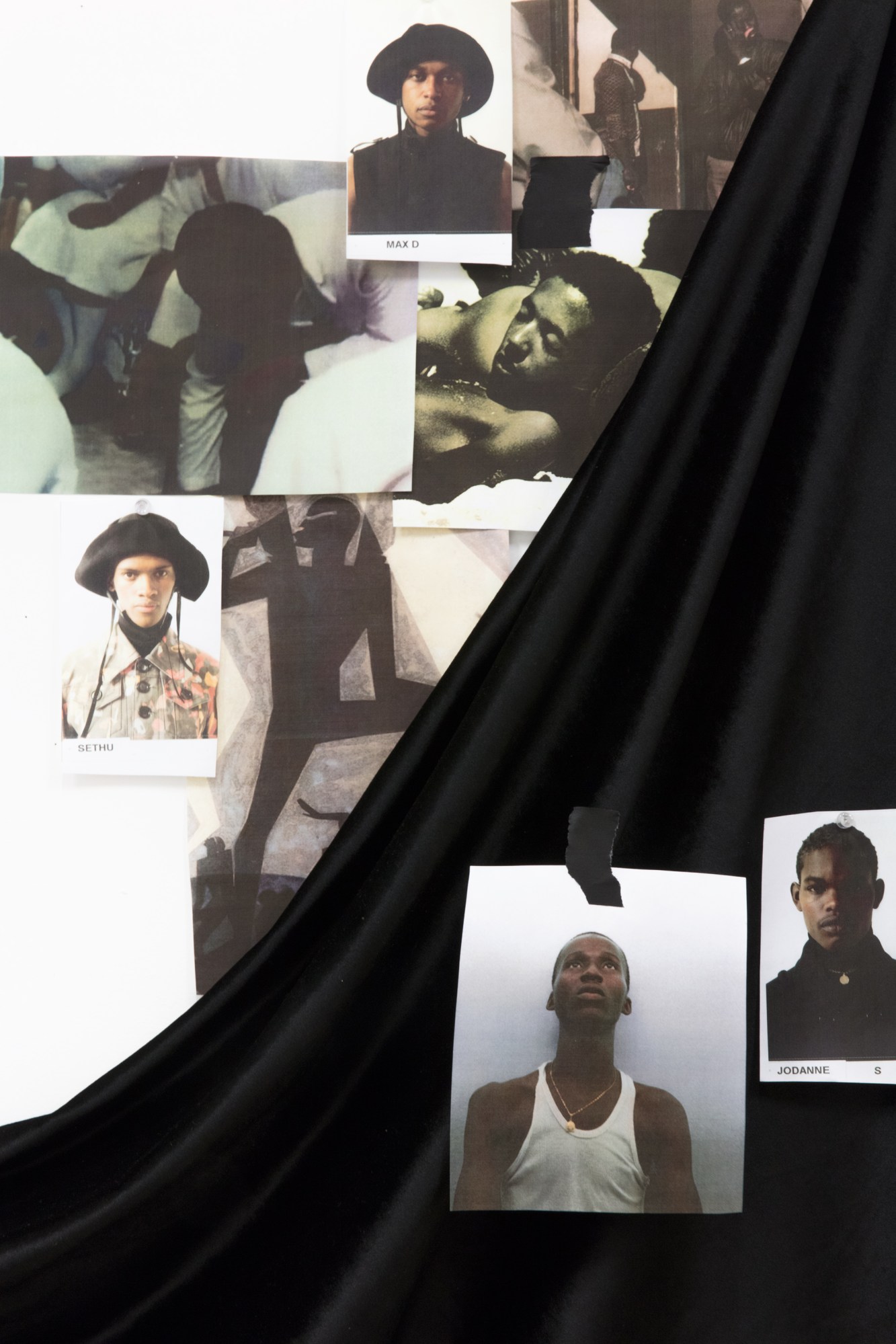This article originally appeared in The Radical Issue, no. 351, Spring 2018.
From the moment she graduated from Central Saint Martins in 2014, a softness and sensitivity has drawn the industry deeper and deeper into Wales Bonner’s world. As she travels through time and across continents and cultures, her narrative-stitched designs continually manage to playfully pause the usual blink-and-you’ll-miss-them blur of boys and instead, we lose ourselves in her carefully crafted collections. For autumn/winter 18, she invited us aboard a ship returning to the Caribbean winter, an evening procession subtly influenced by 40s French couture, featuring high waisted, sensual tailoring with exaggerated curved pockets in battered ivory silk – along with functional-yet-fabulous waterproofs.
“It was about a sailor who’s been away at sea for a long time, and was returning back to an island,” Wales Bonner explained after the show. “I kept thinking about Aimé Césaire’s Notebook Of A Return To The Native Land, and this idea of shifting perspectives after leaving the French Caribbean, studying in Paris and then returning home – looking at his island from a distance, observing this familiar world from afar.” While echoing the words of poets and thinkers that have long inspired her, rather than quote Césaire, Miller, Sharpe and Walcott’s declarations and prose, Grace weaves their words into her garments, transforming their power into something moving.
“I was thinking about this sense of an unresolved state. Having a distance, romanticising something.”
Presented in the European 18th century interior of a Grosvenor Place townhouse, Wales Bonner invited artist Eric N. Mack to create a site-specific installation that echoed the collection’s theme of evolving identities. Eric refers to himself as a painter but his signature large-scale assemblages frequently escape the traditional canvas-to-stretcher format to take in sculpture, readymades and performance. Collaging combinations of used textiles, worn clothes, moving blankets and torn rags, alongside photographs and pull outs from books and magazines, his work investigates how different materials reflect identity. Though their choice of medium and favoured textiles might differ, this creative coming together was driven by their mutual appreciation of all manner of fabrications. “I first learned about Grace’s work through Instagram, seeing images from her graduate collection,” Eric explained. “I was drawn to the figure she designs for and the sensuality of the clothing is so special to me. The material use was particularly strong, a plush pink mohair suit comes to mind or the velvet and cowrie shell jacket.” From URL likes to IRL meets, the pair were brought together by Duro Olowu’s Making and Unmaking exhibition at the Camden Art Centre and kept in close contact, frequently comparing notes from their respective art and fashion worlds. “Soon after we first met, we spoke about working together. A part of the nature of my work is about the painted surface having access to movement and the space of her catwalk show had possibilities of a readymade durational performance.”

Ahead of his first solo exhibition with Simon Lee Gallery, which is set to in London in April 2018, Eric gathered textiles in New York that complimented and contradicted those used by Bonner before spending four days immersed in the Wales Bonner studio as the team applied the finishing touches to the collection. “I worked alongside Grace on the opposite end of the room, while the looks were being finalised and the models cast, I was adding textiles and draping the space. At some point we were all editing and critiquing as one, that felt particularly powerful and allowed the golden yellow to harmonise.” Working side by side, their distinct voices could be heard as one as the artist worked within the grand interior and draped fabric across the catwalk space. The resulting sail-like drapes felt driven by the same force that breathed life throughout Wales Bonner’s enthralling narrative.
“I’m energised working with Grace,” Eric explained, “The exuberance of her approach allows us all to think about things differently – to consider classic beauty in black masculinity with a rigorous softness.” Like many of us, Eric has been seduced by Wales Bonner’s carefully crafted world and the possibilities of their collaboration go deeper than the usual. “I look forward to expanding with Grace and the challenge will be to be even more poetic, more vulnerable than before – perhaps we’ll synergise studios to create garments.”

Framed by Eric’s artwork, Wales Bonner was exploring ideas of connection and disconnection, both emotional and physical throughout this collection. “I was thinking about Creole identity, and this sense of an unresolved state,” Grace said. “That’s something that I identify with. It’s how I observe and connect personally – having a distance, romanticising aspects of it. There’s a soulfulness that I’m trying to communicate, alongside this sense of celebrating a collective identity.” This was most obvious in the prints and hand painted reproductions of works from Jacob Lawrence’s Migration series, the celebrated Afro-American painter served in the United States Coast Guard in the 40s. “You see crowds of people, the joy of the collective and we were keen to replicate that in our own way,” she explained.
Grace’s practice is one of constantly evolving collaboration. For i-D, both Grace and Eric shared photography and their inspirations with their friend, artist Paul Mpagi Sepuya. “It’s like a live collage,” says Grace of Paul’s methods, re-photographing images printed out in his studio, while also placing himself in the frame. “We’re all contemporaries,” says Grace of Eric and Paul. “It’s really nice to connect these people together.”

Credits
Photography Paul Mpagi Sepuya
